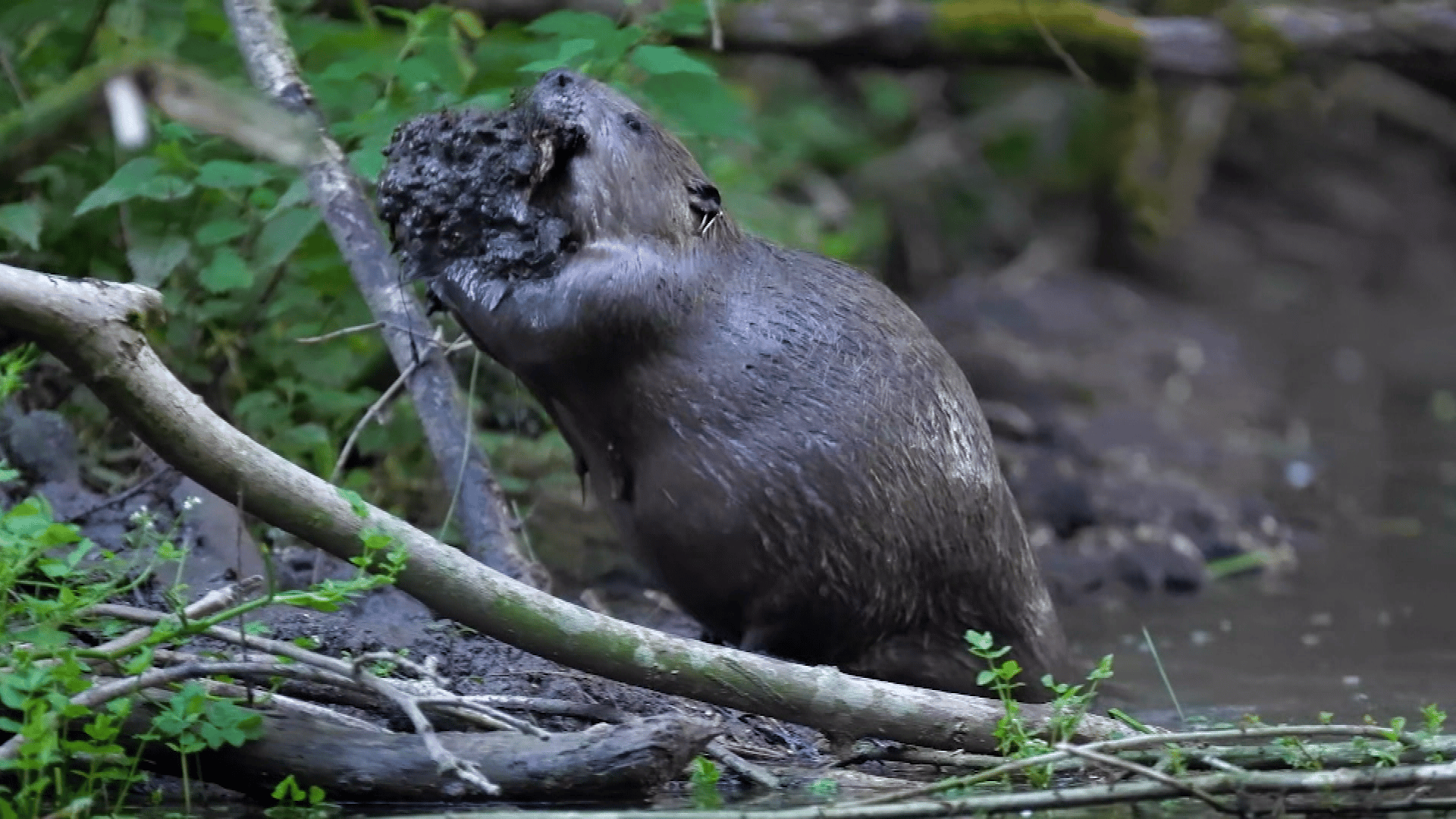Spains Hall Estate is one of the first places in England to reintroduce the Eurasian Beaver, which went extinct in Britain in the 16th century. The aim of the project is to explore the beavers’ capacity to provide natural flood management alongside other man-made natural flood management measures.
Partners of the project include the Environment Agency, the Essex Wildlife Trust, Essex and Suffolk Rivers Trust, Essex County Council, Anglian Water and Suffolk Water.
Initially the project was funded by the Environment Agency, Coca-Cola (through its Replenish Fund, accessed via the Rivers Trust movement), Regional Flood and Coastal Committee and Spains Hall Estate, but the most recent phase has brought in Anglian Water, Essex County Council and Essex and Suffolk Water.
All funding to date has been capital rather than revenue, but this case study has been included as an example of positive community engagement with a nature-based project.
Acknowledgements
With many thanks for his time and insight:
Archie Ruggles-Brise, Independent Rural Estate Manager and Environmental Professional, MProf C.WEM
Date published: 08/12/2022
Identifying Community Stakeholders
Spains Hall Estate is situated upstream of Finchingfield, a village with over 800 residents that is often called ‘the most photographed village in England’, due to its picturesque features. The village’s demographic mainly consists of senior residents and young families.
The centre of the village is prone to severe flooding and 18 properties are classified as ‘at risk’ on the Environment Agency’s flood receptor database. Some of these have Property Level Flood resilience measures, such as flood doors and sandbags, but the impact of flooding remains. In 2001, Finchingfield experienced its worst flooding in recent memory, damaging 37 homes and causing £2 million of damages.
Archie Ruggles-Brise, rural estate manager and estate owner at Spains Hall, comments that flooding is an emotive topic in the community. It is felt by some residents that there has been a historic lack of response to this flooding, and that the village is at a disadvantage due to its smaller size. For example, if severe flooding affects less than 20 properties, the flood risk authorities are not required to register the flooding as an incident, which excludes these properties from more advanced post-flood response measures.
Ruggles-Brise wanted to promote the natural flood management beaver project with the Finchingfield community, as it had the potential to help alleviate this flood risk and ‘flood anxiety’ for the residents.
However, as all the risks and liability of this project are being borne by the Estate, and the project only held potential benefits for the community, the project partnership agreed to start community engagement when plans were relatively finalised for the sake of efficiency in co-design. Ruggles-Brise also felt that he had ample local knowledge to contribute to the project’s design, as he and his family have been living in this area for several generations.
Ruggles-Brise comments that this approach would not have been taken had there been any potential downsides for the community, in which case a more structured approach to community co-design would have been taken.
Initial Engagement
The Finchingfield community was first notified of the project in November 2018, around two months before the project was formally launched and the beavers were released onto the Estate.
The project partners decided to hold a public meeting in the local village hall for the residents and any other external individuals interested in the scheme. Ruggles-Brise advertised the meeting in the local parish newspaper, on Twitter and on several Facebook community groups that he was a member of. He also promoted the meeting through word-of-mouth in his regular encounters in the village.
The project partners didn’t know how many would attend and were somewhat surprised when over 80 people attended the meeting. All project partners – Ruggles-Brise, the Environment Agency, Essex Wildlife Trust, and Suffolk Rivers Trust – presented separate components of the project:
- Ruggles-Brise opened the meeting with an overview of the project and how it could benefit the local community
- The Environment Agency representative walked through the technical implementation of the project and what it would look like on the Estate
- The Wildlife Trust representative talked about the beavers themselves and how they were an excellent ‘ecosystem actor’
- The Rivers Trust representative spoke about the concept of Natural Flood Management and how they thought this project could reduce flooding in the village
- A wildlife filmmaker presented a 15-minute film of beavers in the wild and project footage.
In total the meeting took between two to three hours.
Throughout the meeting, the project partners stressed the project’s experimental nature and how no flood risk reduction could be guaranteed. They also said that data collection and data access would be a key feature to inform both the project itself and other projects around the beavers’ potential in delivering natural flood management (see below).
A professional wildlife photographer, Russell Savory, also attended and had prepared film of beavers to present to residents. Ruggles-Brise comments that this media was hugely helpful to demonstrate the more characteristic and endearing aspects of the beavers, as well as show what their habitats could look like.
The meeting included a Q&A session, and residents asked around 10 questions in total. Most of these pertained to questions around the beavers themselves and how they work, especially their differences from Coypu, which are a rodent species from South America that were reintroduced in the UK in 1929 for fur farming and had a highly negative impact on the environment.
Overall, residents were very positive about the project and receptive to its launch. Ruggles-Brise comments that he was pleasantly surprised with the degree of interest the project proposal generated with local residents and would advise other project developers not to underestimate the ‘social capital’ value that nature-based projects can have.
Photo credit: Russell Savory
Ongoing Engagement and Sharing Benefits
Two Eurasian beavers were released onto Spains Hall Estate in March 2019, alongside eight timber leaky dam structures, around nine months after project development began. The release enjoyed significant interest from the village residents, social media, and local and national media outlets.
Since March 2019, it’s been estimated that 15% of the original enclosure has become wetland, and that the beavers are storing around 2.5 million litres of water, around the same volume as an Olympic swimming pool.
The beavers have also since bred and there are now seven in the colony. Ruggles-Brise recently announced that he will build two new enclosures ten times the size of the first, a total of 40 hectares (100 acres) that will run along the valley of the Finchingfield Brook, with an estimated future water storage capacity of 43 million litres.
While flood risk reduction benefits have not been directly attributable to the project, due to complexities in the river catchment and challenges in flood modelling beaver wetlands, anecdotally some Finchingfield residents have said to Ruggles-Brise that they have noticed less severe flooding in the worst flooding months of the year since the beavers arrived.
Ruggles-Brise started hosting public tours of the beaver enclosure in 2019, soon after the beavers were first released. He charged a fee for these tours, initially £10 per person, but also offered several free tours to local community groups, such as Finchingfield residents, the Parish Council, and children’s groups.
These tours were overwhelmingly popular. Before Covid-19 restrictions were started, Ruggles-Brise showed over 400 people around the enclosure each year. He comments that this level of demand meant he needed to be careful about a few logistical issues, such as the risk of disturbing the beavers themselves, and an increasing time commitment.
Ruggles-Brise continues to lead the tours as part of a wider offering to the public on the work at Spains Hall Estate. Finchingfield residents often ask him about the project in day-to-day encounters in the village.
Ruggles-Brise also maintains an active social media presence to keep the public up to date on the project, but is careful in the wording of any communications, and along with statutory project partners avoids claiming direct credit from any perceived success during flood events in the village.
When the village suffered from a severe drought in the summer of 2022, there were a few local residents who blamed the beavers (incorrectly) for retaining too much water and draining the village pond (which lies downstream of the project area), but Ruggles-Brise says that this was not a widely shared view and therefore manageable. However, it did highlight an ongoing need to be clear about landscape scale systems (such as river catchments), and the value of continuing engagement, as this is often not well understood by the general public.
Open Data Approach
Ruggles-Brise continues to collect a vast range of data on the project, much of which is publicly available via the Spains Hall Estate website.
This data is collected and published in the hopes of building an evidence base on natural flood management and beavers for other actors, such as project developers, policymakers and ecologists to use in their work. This openness was also a key requirement to secure the initial partnership between the Environment Agency, Kings College London and Spains Hall Estate.
The project has received particular attention from masters and PHD students. In the last year, many universities such as East Anglia, UCL, Anglia Ruskin, Essex and Bangor have invited the project partners to research project opportunities to their students on subjects such as botanical changes and water retention in the enclosure. Around a dozen students have requested to use the project in their theses.
A major output from this approach has been a new partnership between Spains Hall Estate and Kings College London, which is exploring the potential for natural flood management in the UK.
Kings College London have offered to equip the enclosure and wider Estate with various instruments that collect data on factors such as the level of the water in the watercourses, peak flow during flooding events, local weather and soil moisture. The data is collected in real time and then analysed by a team at Kings College London, while also being shared openly via the Web. Ruggles-Brise comments that this partnership has greatly increased the monitoring capability of the project.
This partnership has given insight into the soil and water storage capability across the Estate, and Ruggles-Brise says that he feels compelled to act on some of this data, namely how they put some 400 hectares of the Estate to best use.

